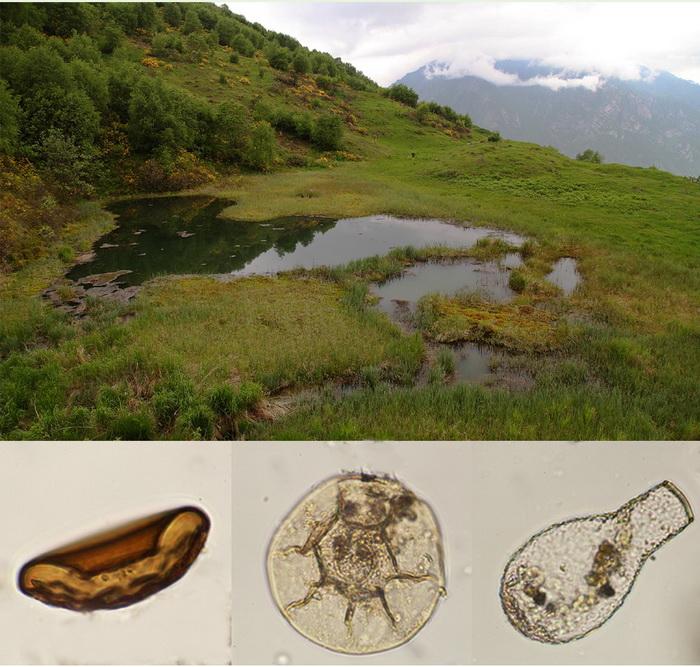
Understanding the nature of interactions between different ecological and taxonomic groups of living organisms in ecosystems is the most important task of ecology. This issue is of particular interest in relation to the interactions between the aboveground and soil components of ecosystems. Scientists from M.V. Lomonosov Moscow State University together with colleagues from the A.N. Severtsov RAS (Moscow) studied the influence of macro- (geographical position) and microenvironment (water hydrochemistry and temperature), as well as the composition of vegetation (including vascular plants and bryophytes) on the species structure of testate amoebae communities.
The study was carried out on relic upland sphagnum bogs of the North Caucasus, located at altitudes of more than 1600 m above sea level. Swamps covered with sphagnum mosses are often found on the plains, but are rare in the mountains. In the Caucasus, the fauna of such reservoirs has been studied very poorly. In North Ossetia and Kabardino-Balkaria there are more than a dozen small swamps, usually located on flat or slightly concave sections of the slopes of mountain ranges. The largest swamp, Chifandzar, is located at the headwaters of the Kharesidon River in North Ossetia.
The study made it possible to discover a strong relationship between testate amoeba communities and swamp vegetation. Characteristically, the composition of mosses, which form a complex structured habitat for microorganisms, determined the composition of amoebae to the greatest extent. The influence of the composition of the flora on testate amoebae was comparable to the influence of geographical location and exceeded the influence of local abiotic conditions. Apparently, vegetation is a complex ecological factor which reflects the sum of environmental conditions affecting testate amoebae in a separate biotope. Further research should clarify how true this hypothesis is and deepen the understanding of the relationship between biotic and abiotic components in raised bogs.
The research was supported by the Russian Science Foundation grant No. 19-14-00102.
Tsyganov A.N., Chertoprud E.S., Mazei N.G., Esaulov A.S., Sadchikov I.P., Mazei Y.A. 2023. The effects of vegetation and environmental variables on testate amoeba assemblages in Sphagnum peatlands in the Northern Caucasus Mountains // Diversity. 15, 258. https://doi.org/10.3390/d15020258
Related materials:
Science and Life: "Amoebic Preferences"
